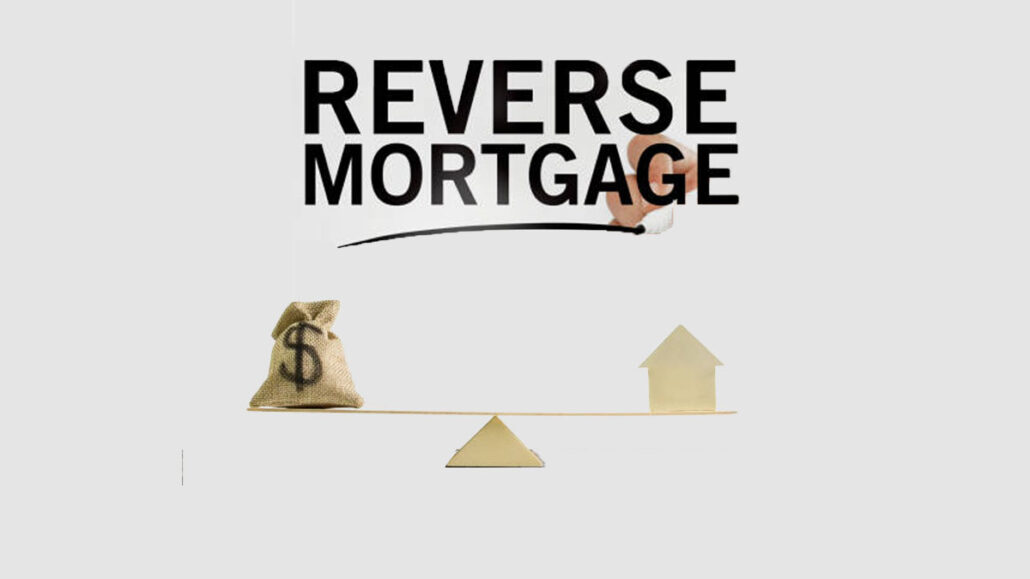Reverse mortgages are a unique financial instrument designed to provide homeowners aged 62 or older with access to the equity in their homes. Unlike traditional mortgages, where borrowers make regular payments to repay the loan, reverse mortgages allow homeowners to borrow against their equity and receive the proceeds as a lump sum, fixed monthly payments, or a line of credit. Learn about reverse mortgage plan, how they work, eligibility requirements, and the potential benefits. Make informed decisions about your financial future.

This type of loan is particularly appealing to seniors who may have limited income or savings, as it offers a way to tap into their home’s value without having to sell the property. However, it’s important to understand the potential drawbacks and costs associated with reverse mortgages before making a decision.
What Reverse Mortgage
A reverse mortgage is a type of loan that allows homeowners aged 62 or older to borrow against the equity in their home without having to sell the property. Unlike traditional mortgages, where borrowers make regular payments to repay the loan, reverse mortgages allow homeowners to receive the proceeds as a lump sum, fixed monthly payments, or a line of credit.
How it Works
- Initial Consultation: A potential borrower meets with a reverse mortgage professional to discuss their financial situation, goals, and the type of reverse mortgage that best suits their needs.
- Loan Application: The borrower applies for a reverse mortgage, providing necessary documentation such as proof of age, income, and property ownership.
- Property Appraisal: A professional appraiser assesses the value of the home to determine the maximum loan amount available.
- Counseling: The borrower is required to receive counseling to ensure they understand the terms and conditions of the loan, including the potential costs and risks.
- Disbursement of Funds: Once the loan is approved, the borrower receives the proceeds of the reverse mortgage, either as a lump sum, fixed monthly payments, or a line of credit.
Key Features
- Stay in Your Home: Borrowers can continue to live in their homes for as long as they choose, as long as they meet the terms of the loan.
- No Monthly Mortgage Payments: Unlike traditional mortgages, borrowers are not required to make monthly payments on a reverse mortgage.
- Interest Deferral: The interest on the loan is typically deferred until the home is sold or the borrower no longer lives there.
- Government-Insured: Most reverse mortgages are insured by the Federal Housing Administration (FHA), providing borrowers with additional protection.
Eligibility Requirements
- Age: The minimum age requirement to obtain a reverse mortgage is 62 years old.
- Homeownership: The home must be the borrower’s primary residence. This means that the borrower must live in the home as their main place of residence. Additionally, the home must be either a single-family home, a condominium, or a manufactured home.
- Income: There are no strict income requirements for a reverse mortgage. However, borrowers must be able to demonstrate that they can afford to pay property taxes, homeowners insurance, and any other ongoing expenses associated with owning the home.
- Credit Score: While there is no minimum credit score requirement for a reverse mortgage, a higher credit score can often lead to better terms and lower interest rates. However, even borrowers with lower credit scores may still be able to qualify for a reverse mortgage.
Benefits of Reverse Mortgage
Financial Security
One of the primary benefits of a reverse mortgage is the ability to provide a steady income stream. By tapping into the equity in your home, you can receive regular payments that can supplement your retirement income or help cover other expenses. This can provide financial security and peace of mind, especially for those who may have limited savings or investments.
Homeownership
Reverse mortgages allow you to continue living in your home for as long as you choose, as long as you meet the terms of the loan. This can be particularly beneficial for seniors who want to maintain their independence and lifestyle. By staying in your home, you can avoid the stress and upheaval associated with moving, and you can continue to enjoy the comfort and familiarity of your surroundings.
Retirement Planning
Reverse mortgages can be a valuable tool for retirement planning. By providing a steady income stream, they can help you bridge the gap between your retirement savings and your expenses. This can allow you to maintain your lifestyle and enjoy your retirement years without worrying about running out of money. It’s important to note that reverse mortgages should be considered as one component of your overall retirement plan, and it’s essential to consult with a financial advisor to determine if a reverse mortgage is the right choice for you.
Application Process for a Reverse Mortgage
- Initial Consultation: Schedule a meeting with a reverse mortgage professional to discuss your financial situation, goals, and the type of reverse mortgage that best suits your needs. They will explain the process, answer your questions, and provide you with information about the different types of reverse mortgages available.
- Loan Application: Once you’ve decided to proceed, you’ll need to fill out a loan application. This application will require information about your income, assets, debts, and property ownership.
- Credit Check: The lender will conduct a credit check to assess your creditworthiness. While there’s no minimum credit score requirement for a reverse mortgage, a higher credit score may result in better terms and lower interest rates.
- Property Appraisal: A professional appraiser will assess the value of your home to determine the maximum loan amount you can qualify for.
- Counseling: You’ll be required to receive counseling to ensure you understand the terms and conditions of the loan, including the potential costs and risks. This counseling can be provided by a HUD-approved housing counselor.
- Loan Closing: Once the loan is approved, you’ll attend a closing meeting to sign the necessary documents and receive the proceeds of the loan. The closing process is similar to the closing process for a traditional mortgage.
- Disbursement of Funds: After the closing, the lender will disburse the loan proceeds to you, either as a lump sum, fixed monthly payments, or a line of credit.
It’s important to note that the specific steps and timelines may vary depending on the lender and your individual circumstances.
FAQs
Can I still live in my home after getting a reverse mortgage?
Yes, you can continue to live in your home for as long as you wish, as long as you meet the terms of the loan.
Can I use a reverse mortgage to pay off other debts?
Yes, you can use the proceeds from a reverse mortgage to pay off other debts, such as credit cards or medical bills.
Do I need to have a certain income to qualify for a reverse mortgage?
No, there is no minimum income requirement for a reverse mortgage.
Can I leave my home to my children after I die?
Yes, you can still leave your home to your children after you die. However, if the loan balance is higher than the value of the home, your heirs may be responsible for paying off the difference.
How do I apply for a reverse mortgage?
You can apply for a reverse mortgage through a licensed reverse mortgage lender. They will help you determine your eligibility and provide you with information about the different loan options available.
Conclusion
A reverse mortgage can be a valuable tool for homeowners aged 62 or older who need to access equity in their home. However, it’s important to carefully consider the potential benefits and drawbacks before making a decision. Consulting with a financial advisor can help you determine if a reverse mortgage is the right choice for your situation.

